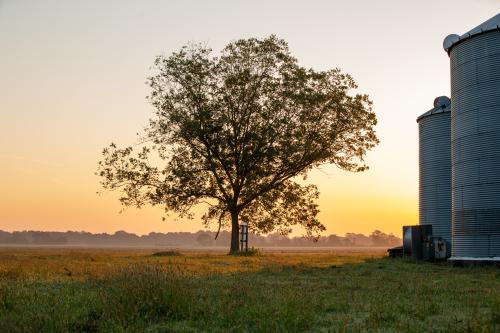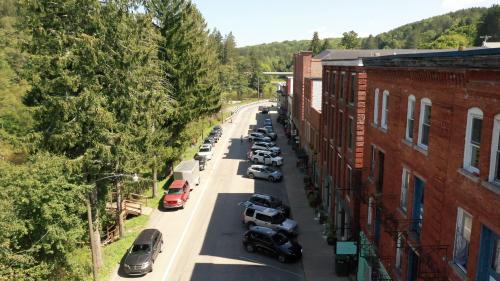On December 27, 2022, the New York Times published an essay I wrote calling for a renaissance in federal rural policy. My motivation for writing the article was borne from a frustration of the media’s obsession with rural politics—that is, who in rural America is voting for whom, and why—with little regard or attention to rural policy, or how federal, state, and local governments could do things differently to help rural places to thrive.
Federal policy has historically played an important role in helping rural places contribute to American economic and social life, but it is no longer fit for purpose. This is leaving rural places starved for investment as they navigate 21st century shifts in the economy and seek to become more vibrant, inclusive, and sustainable. The essay included a call for a national rural policy to help “put local assets to creative use, unleash entrepreneurial activity, share the benefits widely and retain the value locally.”
It resulted in almost 1,700 comments from readers and a flood of reactions in my inbox. “Don’t read the comments” counseled colleagues, warning against the rabbit hole of negativity. Yet many comments surfaced thoughtful questions and gaps, and in the spirit of advancing a policy discourse, I offer responses to several of the themes that emerged:
1. “Ask rural places what they want.”
Some commenters read my call for a more active and effective federal role as a recommendation to overtake and usurp local agency and authority. To the contrary: Sustainable development frameworks are most successful when local people design, direct, own, and execute the solutions to the problems they are facing.
So I wholeheartedly agree with asking rural people, and ensuring that the federal government invests much more directly in local leaders and their innovation. But the federal government should also provide incentives or boundaries to ensure maximum public benefit in line with national policy priorities. This might mean incentivizing cleaner energy sources or ensuring that minority populations who have been politically marginalized in the past are included in the design or decisionmaking of new development efforts, so the benefits are widely shared.
2. “What about the role of state and local governments?”
Several commenters rightly surfaced questions about the importance of state and local governments to the well-being of rural communities. State governments set the parameters of their local jurisdictions’ taxing and legal authorities, provide revenue, and are often the decisionmakers on how federal funds are spent. For example, about forty-five percent of the resources in the Infrastructure Investment and Jobs Act (IIJA) will be decided by states and local governments.
States are increasingly limiting the flexibility of local jurisdictions and sharing less of their resources, moves generally attributed to political differences between state leaders and large metros. Yet such shifts can have negative consequences for local rural governments, as evidenced by the impact of the tax cuts enacted in Kansas. Some rural leaders are recognizing that state policies driven primarily by culture wars could have negative consequences for their communities. The impact on local rural governments of state policy changes driven by tensions with metropolitan governments is an area ripe for further research.
In general, the capacity of local rural governments is significantly constrained, especially compared to their suburban and urban counterparts. In a recent survey of rural county officials, fifty-two percent reported that their governments experience “moderate” or “significant” levels of fiscal stress. Rural governments are often led by volunteer, part-time elected officials and thinly staffed town halls, struggling to provide basic services and possessing limited ability to respond to major economic or social shocks. For more rural places to succeed, we must strengthen the ability of local governments to govern.
3. “Big business is killing rural.”
Readers pointed to the impact of big-box chains and national franchises on locally owned businesses. Yet national retail and restaurant chains are simply emblematic of larger trends toward financialization and corporate consolidation that have challenged many local institutions that traditionally create a sense of security and self-sufficiency.
Sixty-eight percent of counties without a daily or weekly newspaper are non-metro. Forty percent of rural counties lost bank branches between 2012-2017, and 190 rural hospitals have closed or converted since 2005. Local leaders in rural communities now try to attract stores such as Walmart and Dollar General, not only to improve access to groceries, but because it provides jobs and a signal to the market that their community is worthy of investment.
4. “It’s not just rural: What about other places that are lagging?”
Many small- and mid-sized cities in former industrial centers are also facing challenges, leading some to suggest less focus on rural and more on lagging places overall. Indeed, the future of many rural places will be linked to their nearest metros. But rural places are often minimized in regional efforts, resulting in distrust and approaches that fail to meet their unique challenges related to governance, distance, workforce, and access to capital. Perhaps a national rural strategy would ultimately be a subset of a national economic strategy—but levelling the playing field depends upon articulating one.
Unfortunately, the bulk of the comments expressed negative views dismissive of rural America, with many opposed to any targeted policy.
One set asked “Why should we care about those people and places?” This ignores the important interdependencies between non-metros and the rest of the country. As the country seeks to address climate change, for example, and shift to a clean energy economy, rural places will be where the solar and wind farms are sited, the minerals for batteries are mined and the batteries themselves produced, and where agricultural practices evolve to reduce methane gases.
Indeed, rural places are implicated in many dimensions of the 21st century economy, from data processing to fabrication plants to cryptocurrency mining to online retail distribution. How these economies evolve, who benefits, and how well communities manage them—these are clear and present policy issues that are receiving little attention, leaving rural places to their own devices and offering few guardrails to prevent a modern version of the extractive arrangements prevalent throughout history.
Even more heated were the comments suggesting “it’s their own fault:” i.e., that rural people are getting what they deserve, their votes the primary cause of what they are experiencing. This has odd echoes of the arguments wielded against single mothers during welfare reform debates—ascribing all bad outcomes to bad choices—an argument that was dehumanizing then, and is dehumanizing now.
Several weeks after my essay, the New York Times published an editorial by Paul Krugman asking what could assuage “rural rage?” While the essay made a tentative foray into exploring the implications of, and offering support for, newly enacted policy, the image that rural residents go through their daily lives filled with fury left even local Democratic leaders in so-called Trump country shaking their heads. Such a broad brush conveniently thwarts consideration that policy decisions associated with trade agreements, the movement of capital, enforcement of anti-trust legislation, and regulation of transportation may have played major roles in abetting the challenges rural places now face. Policy decisions, I might add, that many rural people didn’t control or necessarily vote for.
Getting past the “anti-rural rage” and the vitriol reflected in the reactions to my essay will be as important as addressing whatever resentment rural people are harboring. When I listen to the stories of real people in rural places working to provide the best for their families and communities, I find commonalities that cut across the divisions defined and deepened by the obsession with rural politics. So my final response to readers is where I began: We urgently need a constructive bipartisan dialogue to consider policy solutions that can enable thriving, sustainable economic and social structures and create opportunity in all sizes of places across America—and specifically rural ones.







Commentary
Why US rural policy matters
A response to readers…and anti-rural rage
April 10, 2023